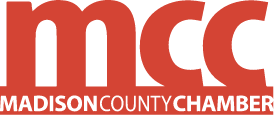Keeping Cash Flow Steady: Smart Moves Every Madison County Small Business Can Make
For small business owners in Madison County, Indiana, cash flow isn’t just a financial metric — it’s the oxygen that keeps your enterprise alive. Whether you’re running a family-owned café in Alexandria or a service company in Anderson, maintaining a steady flow of income versus expenses can determine whether you thrive or just survive.
TL;DR
-
Track inflows and outflows weekly, not just monthly.
-
Separate personal and business accounts (always).
-
Build contracts to prevent surprise costs.
-
Use payment tools that automate invoicing reminders.
-
Keep 3–6 months of operating expenses as a safety cushion.
How-To: Keep Cash Flow in the Green
|
Step |
Action |
Why It Matters |
|
1 |
Forecast monthly cash flow |
Reveals slow periods and helps you plan inventory, payroll, or marketing spend. |
|
2 |
Negotiate better payment terms with vendors |
A 15–30 day cushion gives you breathing room. |
|
3 |
Offer incentives for early payments |
Small discounts (1–2%) can improve liquidity. |
|
4 |
Automate invoices using cloud-based tools like QuickBooks or Zoho Books |
Cuts down on late payments. |
|
5 |
Review your expenses quarterly |
Keeps spending aligned with actual revenue trends. |
Pro Tip: Lock Down Vendor Agreements
Unexpected costs can sink even the most stable businesses. One safeguard is to use well-structured contracts that clearly outline payment schedules, service terms, and deliverables. This minimizes risk when working with suppliers or clients.
Some companies may still require wet signatures — that is, a traditional pen-to-paper signature for authenticity — before work begins. Once signed, you can simply scan and store the document digitally to maintain a searchable record. If you need a resource for secure digital document handling, here’s an option.
FAQ: Common Questions from Madison County Entrepreneurs
Q: How much should I keep in reserve?
A: Ideally, three to six months of operating expenses. Seasonal businesses (like landscaping or retail) might double that.
Q: Is it bad to use personal credit cards to cover shortfalls?
A: It’s risky. Instead, talk to your local credit union about a short-term business line of credit. Try U.S. Small Business Administration’s resource center for guidance.
Q: Should I accept digital wallets and newer payment methods?
A: Yes. Using Square’s online payments or PayPal Business makes it easier for customers to pay promptly.
Q: What tools help track cash flow?
A: Try FreshBooks for deeper invoicing control.
Checklist: The 7-Day Cash Flow Tune-Up
Review recurring subscriptions and cancel unused tools.
Confirm vendor payment cycles match your incoming payments.
Deposit cash daily, not weekly.
Reconcile bank accounts every Friday.
Update your cash forecast for the next 30 days.
Move excess funds to an interest-bearing account at Capital One Business Banking.
Product Spotlight: Wave Accounting
If you’re not ready for a full financial suite, Wave Accounting offers a simple dashboard that syncs invoices, payments, and expenses in one view. It’s free, integrates with bank feeds, and helps small teams in Madison County track day-to-day transactions without extra overhead.
Bonus Tip: Diversify Income Streams
Seasonality can strain cash flow. A catering company, for instance, might add delivery lunches or partner with local events during off-seasons. Score.org’s mentoring programs provide local insights and planning templates to help you adapt your revenue model.
Cash flow mastery is less about luck and more about rhythm. Track often, plan early, and protect your business from financial surprises. Madison County’s small businesses thrive on resilience — and with the right systems, yours can too.

